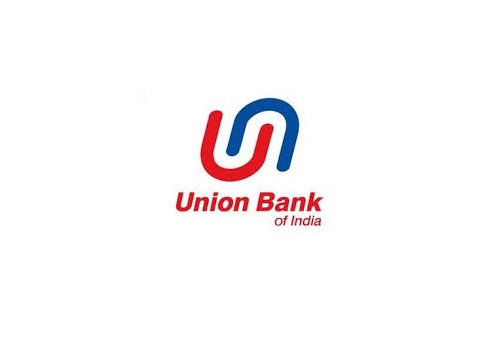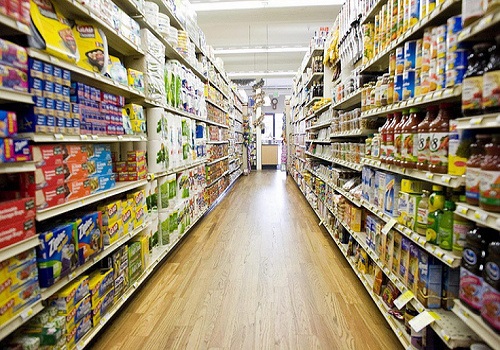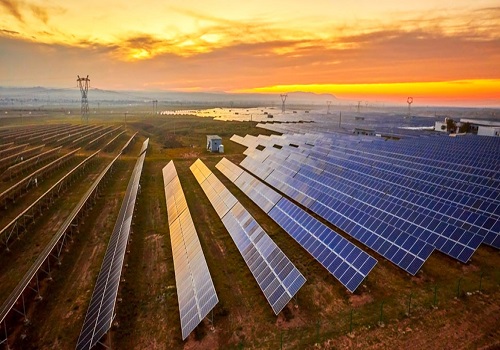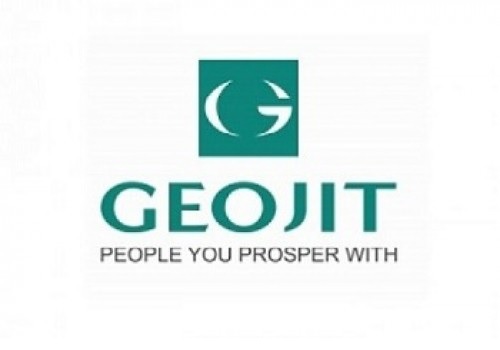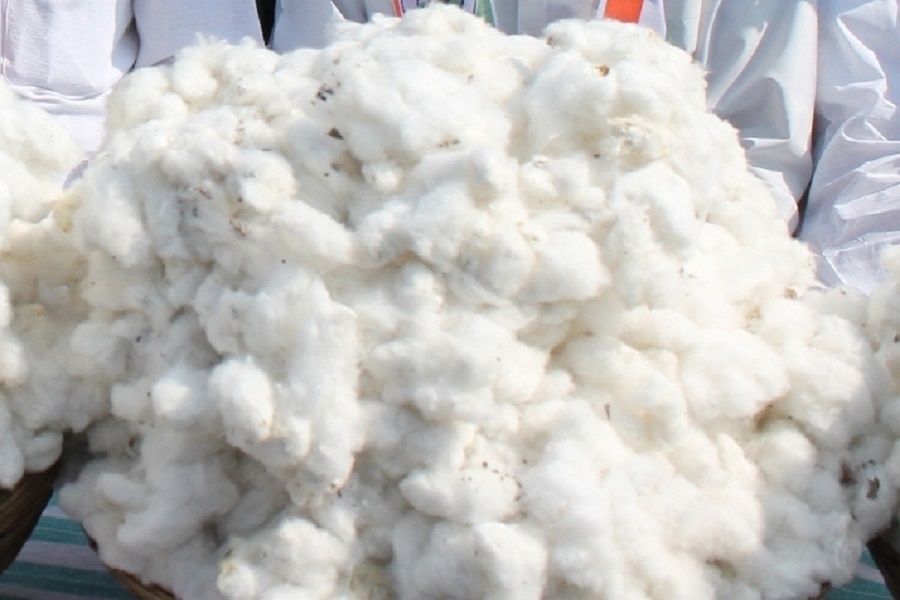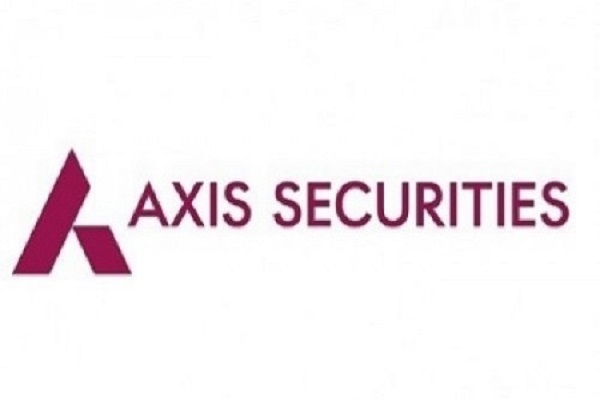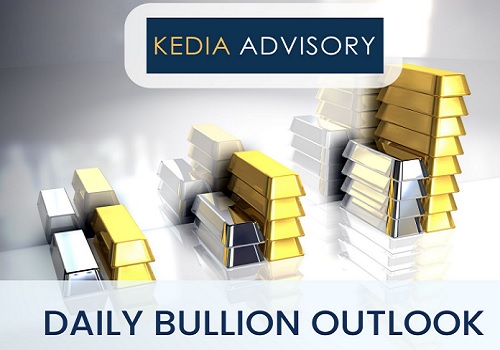Jeera trading range for the day is 18440-19360 - Kedia Advisory

Gold
Gold prices declined by 0.92% to settle at 97,819, as easing tariff concerns and progress in US-EU trade talks reduced the safe-haven appeal of the metal. The sentiment was further pressured by strong US labor data, with jobless claims falling for the sixth consecutive week—the longest stretch of declines since 2022—supporting expectations that the Federal Reserve will hold rates steady next week, though a rate cut remains priced in for September. Tensions between President Trump and Fed Chair Powell also drew attention, but did not trigger significant market reactions. On the global trade front, Switzerland’s gold exports surged 44% month-on-month in June, with shipments to the UK hitting 83.8 metric tons—the highest since August 2019. London vaults saw a 177.8-ton rise in holdings, signaling increased institutional demand. However, China's gold imports fell for the second month in a row to just 63 metric tons, a 36.3% drop from May. Physical demand in Asia remained weak due to high prices, with dealers in India offering discounts up to $15/oz and Chinese dealers showing mixed premiums and discounts. Despite soft retail demand, gold ETFs saw their highest semi-annual inflow since 2020, with global holdings rising by 397.1 tons to 3,615.9 tons, led notably by Asian investors contributing 28% to net inflows. Technically, gold is under long liquidation, with open interest falling by 19.38% to 6,236. Immediate support lies at 97,505, with next support at 97,185. Resistance is seen at 98,385, and a breakout above could push prices toward 98,945.
Trading Ideas:
* Gold trading range for the day is 97185-98945.
* Gold prices fell as concerns over tariffs continued to ease, denting the precious metal's appeal.
* US and EU reportedly near a trade deal after separate Japan agreement.
* Fed expected to hold rates steady next week, September rate cut still possible
Silver
Silver prices declined sharply by 1.81% to settle at 1,13,052, as improving global trade sentiment reduced demand for safe-haven assets. Positive developments in trade negotiations—such as a proposed 15% baseline tariff between the US and EU and Japan’s agreement to a similar deal—boosted risk appetite. A likely extension of the US-China tariff truce also supported market optimism. The Federal Reserve is expected to keep rates unchanged in its upcoming meeting, as policymakers remain cautious about inflation risks stemming from tariff policy. Investment trends in silver remained mixed. While European retail investment continued its gradual recovery in 2025, levels still lag behind the pandemic-era highs. Indian retail investment, on the other hand, showed resilience, rising 7% year-over-year in the first half of 2025 due to persistent bullish price sentiment. Silver-backed ETPs recorded net inflows of 95 million ounces in H1 2025, surpassing all of 2024’s inflows. Total global holdings reached 1.13 billion ounces, nearing the 2021 peak. On the demand-supply front, the silver market is projected to log its fifth consecutive annual deficit in 2025. Industrial fabrication is set to grow by 3%, exceeding 700 million ounces for the first time, driven by green economy sectors. However, jewelry demand is expected to fall 6%, primarily due to weak demand from India amid high prices. Technically, silver is under long liquidation, with open interest dropping by 23.98% to 15,990. Key support lies at 1,11,770, and a break below may test 1,10,490. Resistance is seen at 1,15,015, above which prices may move toward 1,16,980.
Trading Ideas:
* Silver trading range for the day is 110490-116980.
* Silver prices fell as global trade progress reduced safe-haven demand significantly.
* US-China tariff truce likely extended beyond August 12, boosting investor risk appetite.
* U.S. jobless claims fell to a three-month low, signaling a stable labor market despite sluggish hiring.
Crude oil
Crude oil prices edged lower by 0.42% to settle at 5,648, weighed by persistent concerns over weakening economic signals from both the US and China. Market sentiment remained cautious as the US prepares to allow Chevron and other firms to resume limited operations in Venezuela, potentially adding over 200,000 barrels per day to global supply. Additionally, the US withdrew 300,000 barrels from its Strategic Petroleum Reserve (SPR) last week—the first withdrawal since December 2023—raising questions over supply management. ExxonMobil has also been permitted to borrow up to one million barrels to support refining activities, adding to near-term supply pressure. OPEC’s July report maintained a mildly bullish stance, projecting global oil demand to rise by 1.29 million bpd in 2025, with 1.16 million bpd growth expected from non-OECD countries. However, both OPEC and IEA forecasts remain cautious, particularly in contrast to last year's overly optimistic outlooks during a period of declining Asian crude imports. In the US, crude inventories fell by 3.169 million barrels last week—more than double the expected decline—while gasoline stocks also dropped by 1.738 million barrels. However, distillate fuel stocks rose by 2.931 million barrels, and Cushing hub inventories increased by 455,000 barrels. Technically, crude oil is under long liquidation with open interest down by 0.28% to 11,510. Immediate support lies at 5,600, and a break below may test 5,551. Resistance is seen at 5,739, with potential to move up to 5,829.
Trading Ideas:
* Crudeoil trading range for the day is 5551-5829.
* Crude oil dropped as concerns over weakening economic signals from the US and China pressured prices.
* US may allow Chevron in Venezuela, boosting crude exports by 200K bpd
* Black Sea export disruptions and Azeri BTC crude loading issues support oil prices.
Natural gas
Natural gas prices edged higher by 0.49% to settle at 268.1, supported by a smaller-than-expected storage build and forecasts for the most intense heat wave in three years across the U.S. The scorching weather is expected to boost air conditioning demand, thereby increasing gas consumption by power generators. U.S. utilities added just 23 billion cubic feet (bcf) to storage in the week ending July 18, below expectations of 28 bcf, highlighting tighter supply-demand dynamics. Total inventories now stand at 3.075 trillion cubic feet, 4.7% lower than last year but still 5.9% above the five-year average. LSEG data showed that average U.S. gas output in the Lower 48 states has climbed to 107.3 bcfd in July, surpassing June’s record of 106.4 bcfd. However, output dropped to a two-week low of 106.2 bcfd on Thursday, possibly indicating a short-term decline in supply. The EIA’s latest Short-Term Energy Outlook projects U.S. dry gas production to hit 105.9 bcfd in 2025, rising further to 106.4 bcfd in 2026. Domestic consumption is also forecast to reach a record 91.3 bcfd in 2025, with LNG exports expected to climb to 14.6 bcfd in 2025 and 16.0 bcfd in 2026, up from 11.9 bcfd in 2024. Technically, the market is under short covering, with open interest falling by 15.65% to 11,105. Support is at 265.3, with a break below opening the path to 262.4. Resistance lies at 271.6, and a move above could lead to testing 275.
Trading Ideas:
* Naturalgas trading range for the day is 262.4-275.
* Natural gas edged up on smaller-than-expected storage build and heat wave forecasts.
* The U.S. EIA said energy firms added 23 billion cubic feet of gas to storage during the week ended July 18.
* Lower 48 U.S. gas output averages 107.3 bcfd in July, up from June’s record.
Copper
Copper prices edged lower by 0.44% to settle at 896.3 as physical buyers stayed on the sidelines ahead of key developments surrounding potential U.S. import tariffs and global trade agreements. The market remains cautious, awaiting details on the proposed 50% U.S. tariff on copper products, expected to be clarified by the August 1 deadline. The COMEX-LME copper premium stabilized at 29%, still well below the anticipated tariff rate, reflecting subdued market reaction so far. Copper inventories at the Shanghai Futures Exchange dropped 13% to 73,423 metric tons—their lowest since December—highlighting tightening supplies in Asia. However, global fundamentals signaled a surplus, with the International Copper Study Group (ICSG) reporting a 97,000 metric ton surplus in May versus an 80,000 ton deficit in April. The year-to-date surplus stands at 272,000 metric tons, nearly unchanged from the previous year. In May, refined copper output was 2.40 million metric tons, outpacing consumption of 2.30 million tons. Adjusted for changes in Chinese bonded warehouse stocks, the surplus was 67,000 tons. Meanwhile, China’s copper imports rebounded 8.7% in June to 464,000 metric tons, following two months of declines. Production gains from Chile's Codelco and Antofagasta—up 9% and 11% respectively—further suggest improved supply-side dynamics. Technically, copper is under fresh selling pressure, with open interest rising 8.21% to 6,549. Immediate support lies at 893.5, with a drop below exposing 890.6. Resistance is at 900.9, above which prices could test 905.4.
Trading Ideas:
* Copper trading range for the day is 890.6-905.4.
* Copper prices fell as buyers paused ahead of key U.S. tariff clarity.
* COMEX-LME copper premium stable at 29%, below Trump’s proposed 50% tariff.
* SHFE Copper inventories fell 13% to 73,423 metric tons.
Zinc
Zinc prices declined marginally by 0.19% to settle at 267.85 amid a rise in inventories and cautious sentiment ahead of key trade negotiations. Zinc stocks in Shanghai Futures Exchange-monitored warehouses increased by 8.8% from last Friday, adding short-term supply pressure. However, the market is closely watching the upcoming meeting between U.S. and Chinese officials in Stockholm, which may pave the way for a potential trade deal. Broader industrial metal sentiment remains supported by China’s efforts to stimulate growth in core sectors such as machinery, autos, and electrical equipment. On the supply side, zinc production is tightening globally. Chinese smelters are cutting output due to overcapacity and weak demand, while production in southern regions has been disrupted by heavy rains. Global zinc supply concerns are amplified by Teck Resources’ Red Dog Mine output falling 20% in Q1 2025 and Australian smelter Nyrstar announcing a 25% annual production cut due to uncompetitive treatment charges. These developments have pushed the global zinc market into a deficit of 44,100 metric tons in May, compared to a surplus of 17,300 tons in April, according to the International Lead and Zinc Study Group. China’s refined zinc production in May dipped 1% month-on-month, with the January–May cumulative growth of just 0.5% year-on-year—below expectations. Technically, zinc is under fresh selling pressure, with open interest rising 12.5% to 3,483, indicating new short positions. Immediate support lies at 266.5, with further downside risk to 265. Resistance is at 269.8, and a breakout above could lead to testing 271.6.
Trading Ideas:
* Zinc trading range for the day is 265-271.6.
* Zinc dropped as SHFE Zinc inventories rose 8.8% from last Friday.
* Investors are focused on a potential trade deal with the China.
* China's plans to stabilise growth in the machinery, autos and electrical equipment sectors.
Aluminium
Aluminium prices declined by 0.47% to settle at 254.2 amid a rise in inventories and cautious optimism surrounding demand and supply trends. Inventories at Shanghai Futures Exchange-monitored warehouses rose by 6.4% from last Friday, reflecting increased short-term availability. However, the downside remained limited due to expectations of tighter global supply and improved demand outlook from China. Market sentiment was also buoyed by Beijing's recent pledge to stabilize industrial growth and a major CNY 1.2 trillion hydroelectric project, signaling increased infrastructure investment to support the economy. On the supply front, global primary aluminium output rose 0.9% year-on-year in June to 6.045 million tonnes, as per the International Aluminium Institute. However, China’s monthly aluminium production dipped 3.23% in June compared to May, though it still marked a 3.4% year-on-year increase to 3.81 million tonnes. Cumulative output in the first half of 2025 reached 22.38 million tonnes, up 3.3% year-on-year. China’s aluminium exports dropped to 489,000 tonnes in June from 547,000 tonnes in May, signaling softer external demand. Meanwhile, Japanese buyers secured a sharply lower premium of $108/tonne for Q3 shipments, down 41% from the previous quarter, reflecting weak regional demand. Technically, aluminium is under fresh selling pressure, with open interest rising by 9.54% to 4,237, indicating new short positions. Immediate support lies at 253.5, with a further drop potentially testing 252.6. Resistance is seen at 255.8, and a move above could push prices toward 257.2.
Trading Ideas:
* Aluminium trading range for the day is 252.6-257.2.
* Aluminium dropped as SHFE Aluminium inventories rose 6.4% from last Friday.
* However, downside seen limited on the outlook of lower supply and less pessimism on demand from China.
* Global primary aluminium output in June rose 0.9% year on year to 6.045 million tonnes - IAI
Cottoncandy
Cottoncandy prices declined by 0.68% to settle at 55,630, pressured by rising domestic and global supply estimates. According to the Cotton Association of India (CAI), closing stocks for the 2024-25 season are projected at 55.59 lakh bales, a significant 84% increase from the previous year. CAI revised its cotton pressing estimate upward to 311.40 lakh bales from 301.14 lakh bales due to higher crop output, pushing the total supply estimate to 380.59 lakh bales. This increase comes alongside subdued export demand, with exports expected to fall 40% year-on-year to 17 lakh bales, while imports are forecast to more than double to 39 lakh bales from last year’s 15.2 lakh bales. By the end of June, stocks stood at 108.01 lakh bales, with textile mills holding 32 lakh bales and the rest distributed among CCI, traders, and exporters. Though domestic consumption is slightly higher at 308 lakh bales, the rise in imports and lower exports signal a bearish outlook. Globally, the U.S. raised its 2025/26 production forecast to 14.60 million bales, a 600,000 bale increase from June. Ending stocks are expected at 4.60 million bales with a stocks-to-use ratio of 32.4%. Global production and ending stocks are also projected higher, led by increases in China, the U.S., and Mexico. Technically, Cottoncandy is under long liquidation with open interest plummeting by 33.33% to just 8, reflecting reduced trader participation. Support lies at 54,270, and a drop below may test 52,910. Resistance is seen at 56,500, above which prices may rise to 57,370.
Trading Ideas:
* Cottoncandy trading range for the day is 52910-57370.
* Cotton prices dropped as 2024-25 closing stocks seen 84% higher at 55.59 lakh bales
* CAI cut consumption forecast by 8 lakh bales to 307 lakh for the 2024–25 season.
* Cotton exports expected to fall to 15 lakh bales, down 13.36 lakh from last year.
* In Rajkot, a major spot market, the price ended at 27459.75 Rupees gained by 0.3 percent.
Turmeric
Turmeric prices fell sharply by 1.83% to settle at 12,956 yesterday as the market digested expectations of higher acreage this season due to favourable monsoon rains. Daily arrivals increased to 13,660 quintals from 11,940 quintals in the previous session, signaling steady inflows and a marginal rise in supply. Dry weather conditions are aiding timely sowing, and early estimates suggest a 15–20% increase in turmeric acreage, as farmers favour it over less profitable crops. However, the expected acreage rise may not fully translate into higher production because untimely rains could impact yields. Last year, India produced 10.75 lakh tonnes of turmeric, but new crop yields this year are projected to be 10–15% lower, with regions like Nanded hit by small rhizomes and crop rots. At the Duggirala market, robust buyer interest persists as traders favour fresh crop stock, which commands a price premium due to its better quality. Strong demand has sustained daily trade volumes at around 1,000–1,200 bags, with about 50–55% of the total new crop already traded. On the export front, turmeric shipments rose by 8.37% to 34,162 tonnes in April–May 2025 versus the same period last year, and May alone saw a healthy 10.28% year-on-year increase, reflecting strong overseas demand. Technically, the market shows signs of fresh selling, with open interest up 1.34% to 17,780 lots while prices slipped by 242. Turmeric finds immediate support at 12,764, below which prices could test 12,570. Resistance is now seen at 13,216; a move above this could push prices towards 13,474.
Trading Ideas:
* Turmeric trading range for the day is 12570-13474.
* Turmeric prices dropped due to expected increase in acreage.
* Turmeric acreage is expected to increase by 15-20% this season, supported by low competitive crop prices.
* In April 2025 around 14,956.80 tonnes were exported as against 14,109.10 tonnes in April 2024 showing a rise of 6%.
* In Nizamabad, a major spot market, the price ended at 13903.15 Rupees dropped by -0.89 percent.
Jeera
Jeera slipped by 1.93% yesterday, settling at 18,790 as the market continued to face selling pressure amid sluggish domestic and export demand following the end of the retail season. Traders noted that the post-retail season lull and a lack of aggressive buying from overseas markets have weighed on sentiment, despite geopolitical supply issues in other major cumin-producing countries like Syria, Turkey, and Afghanistan. Comfortable domestic stocks have added to the pressure — farmers still hold around 20 lakh bags, but only about 3–4 lakh bags are expected to be traded before the season concludes, leaving a large carry-forward stock of nearly 16 lakh bags. Production for the current season is projected to remain strong, estimated at 90–92 lakh bags, slightly lower than last year’s 1.10 crore bags, supported by good crop conditions and sowing in key producing states such as Gujarat and Rajasthan. However, weak overseas buying has overshadowed these supportive fundamentals. On the export front, jeera shipments during April–May 2025 fell sharply by 27.07% year-on-year to about 42,925 tonnes. While May exports rose by 11.26% month-on-month and 17.68% compared to April, they remain below the previous year’s levels, underlining the tepid global demand. Technically, the market is under long liquidation, with open interest dropping by 0.83% to 6,063 lots while prices declined by 370. Jeera finds immediate support at 18,620; a drop below this could drag prices towards 18,440. Resistance is seen near 19,080, and a break above could lift prices to 19,360.
Trading Ideas:
* Jeera trading range for the day is 18440-19360.
* Jeera prices dropped due to weak domestic post retail season.
* Only 3-4 lakh bags are expected to be traded by the end of the season, leaving a carry-forward stock of about 16 lakh bags
* Total arrivals witnessed a marginal increase to 12,000 bags (55 kg each) as against 11,800 bags on the previous day.
* In Unjha, a major spot market, the price ended at 19668.7 Rupees dropped by -0.25 percent.
Views express by all participants are for information & academic purpose only. Kindly read disclaimer before referring below views








